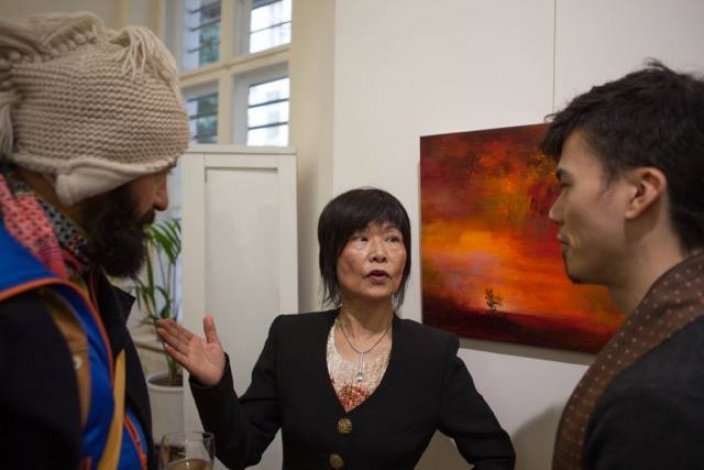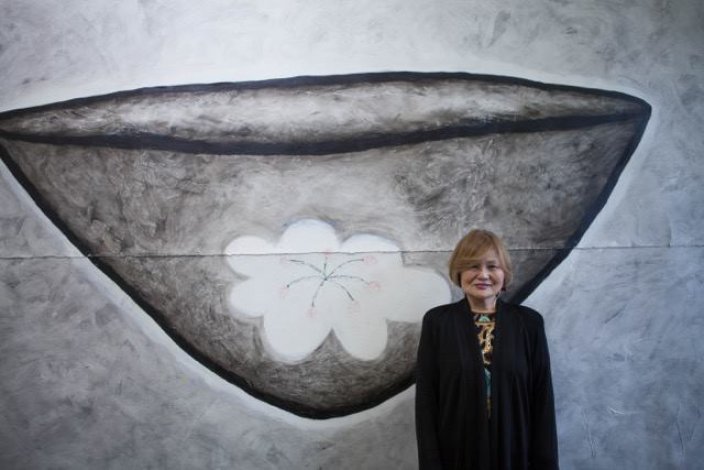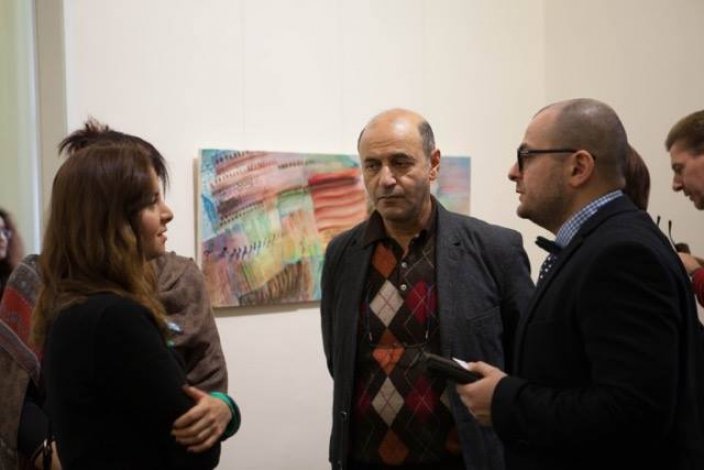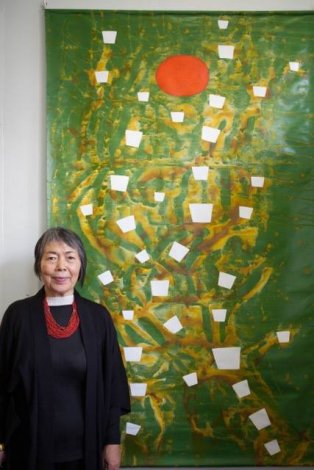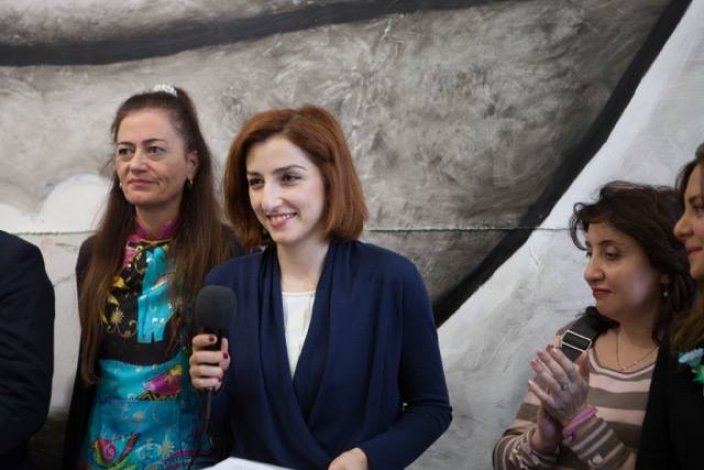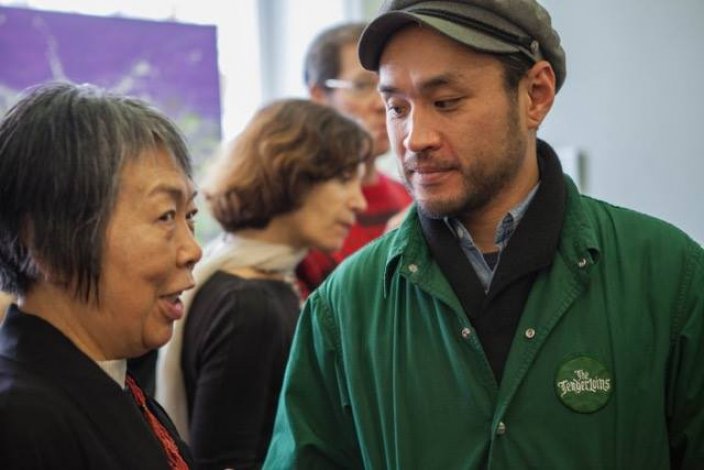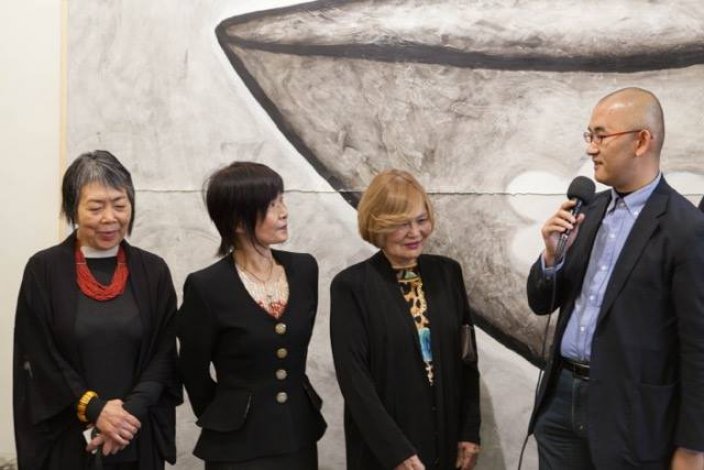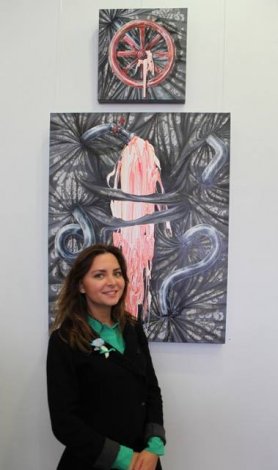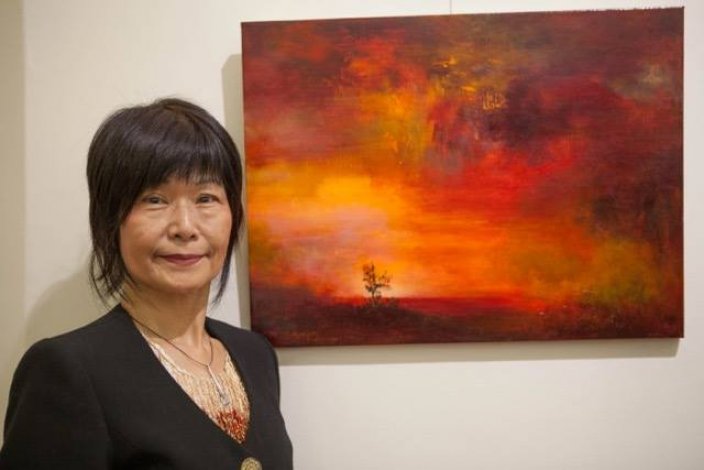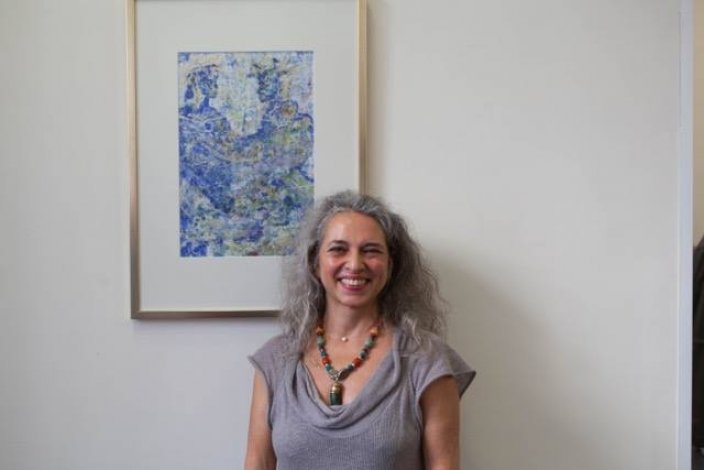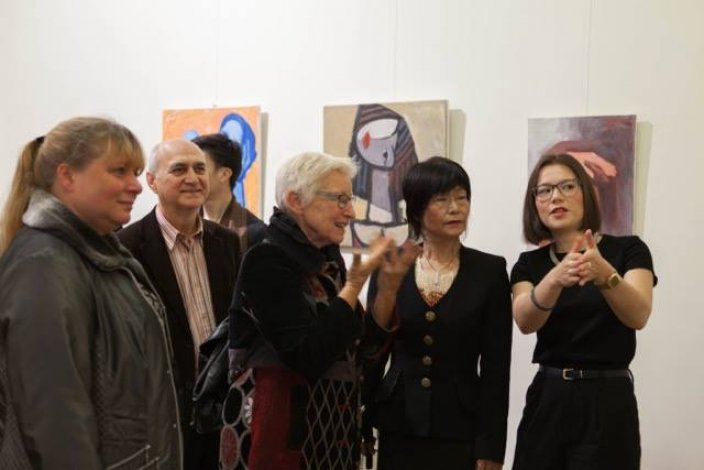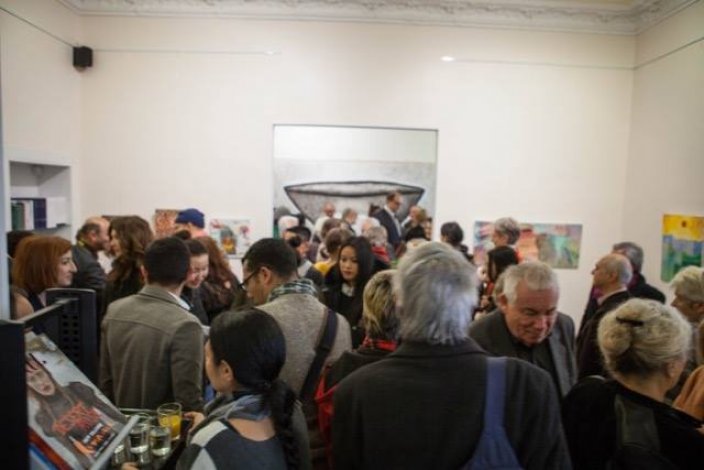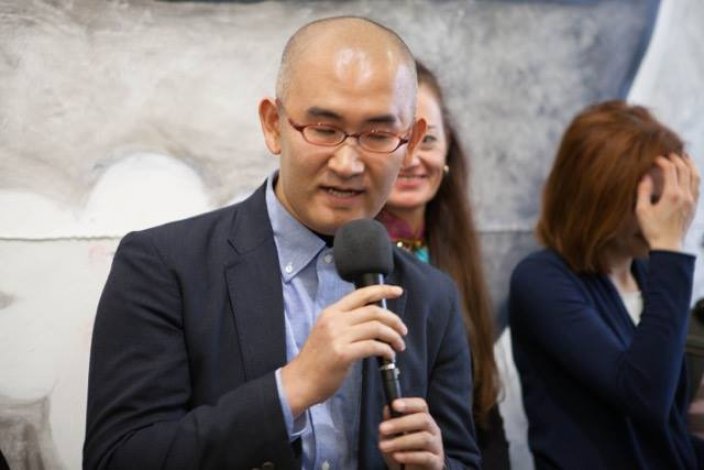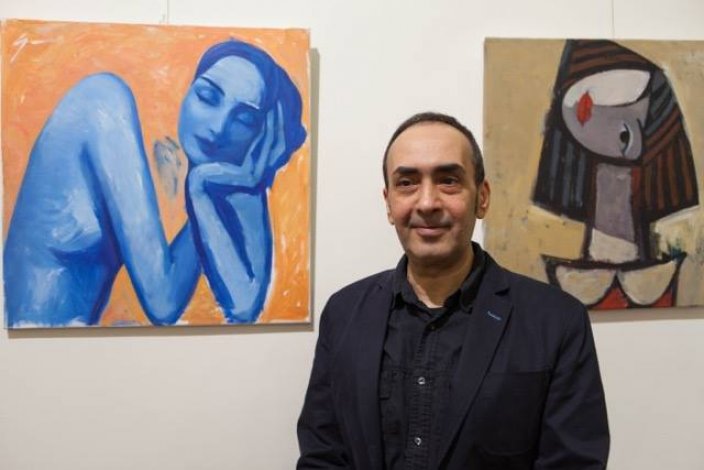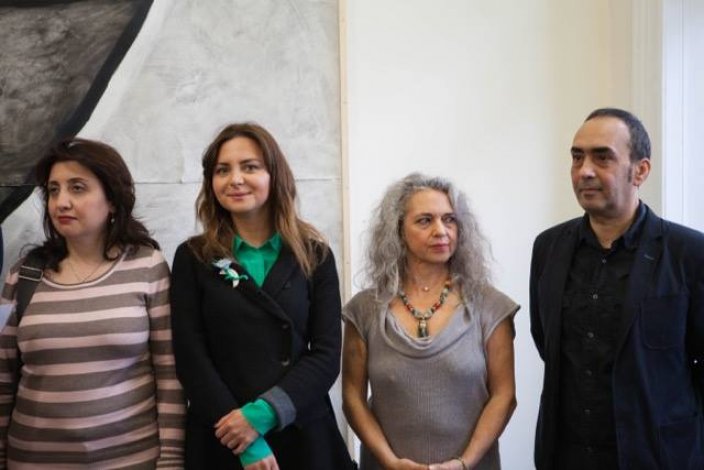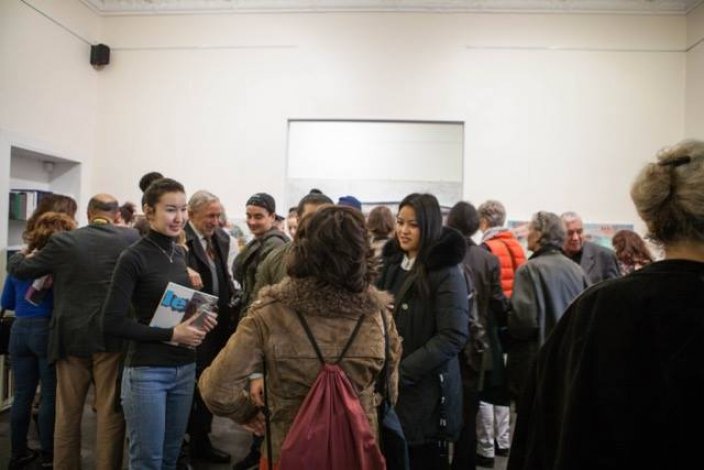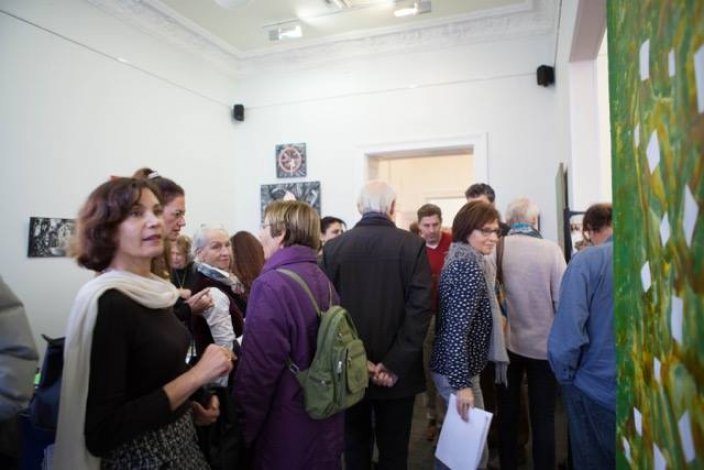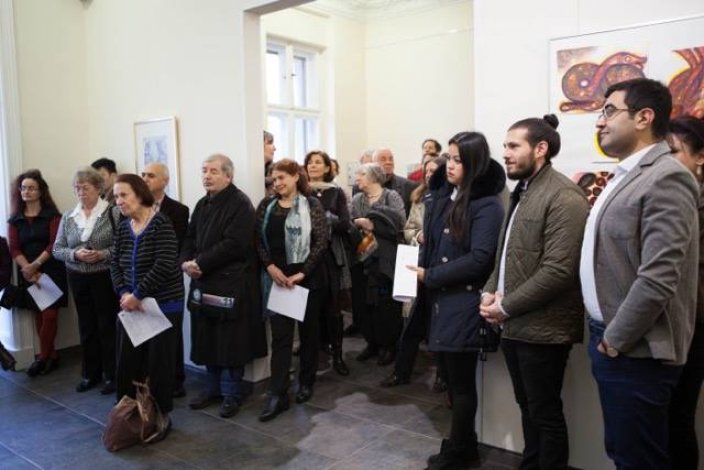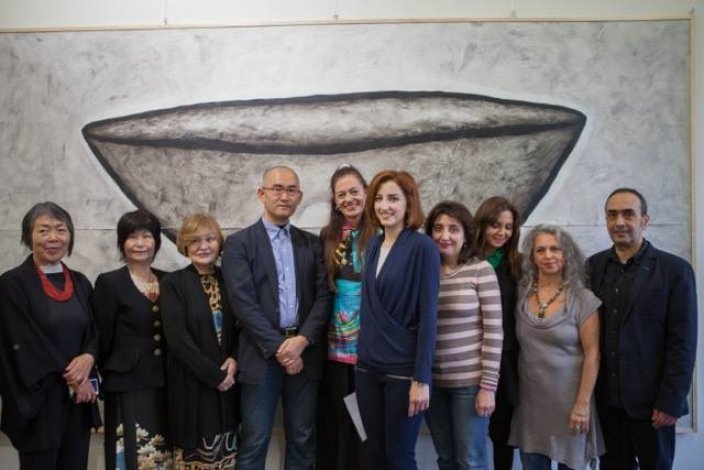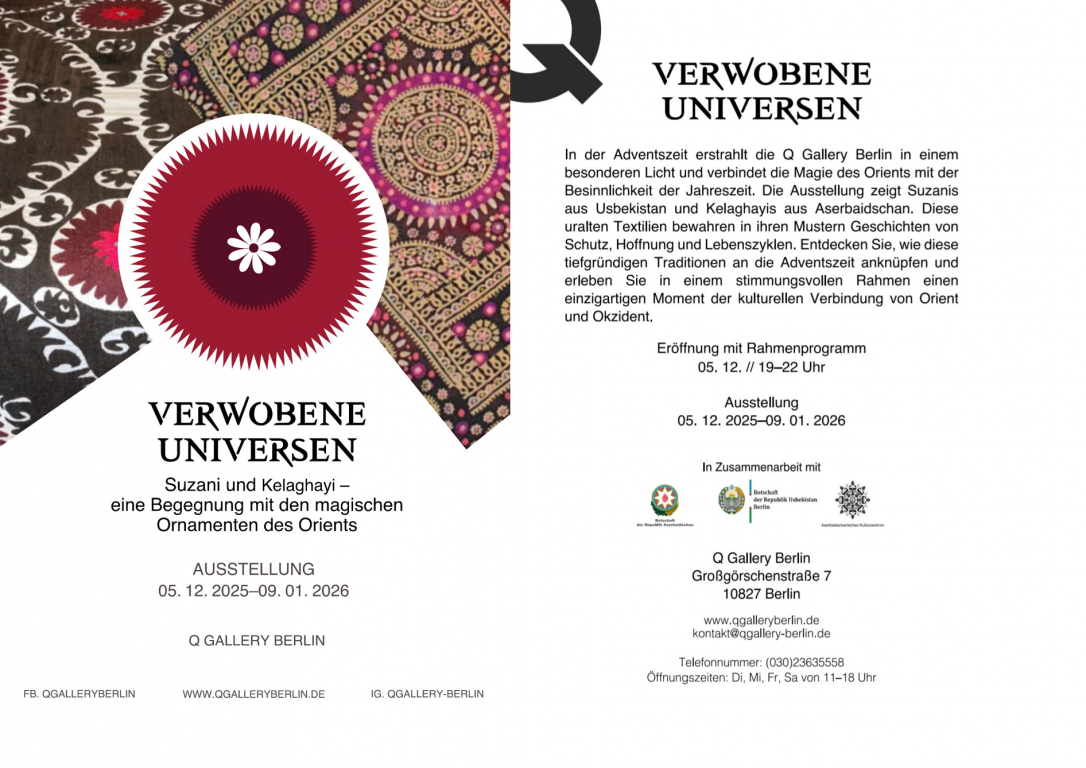Gallery
Azerbaijan meets Japan in Berlin
Azerbaijan Telman Gulijev prefers rather human aspects in his paintings which he merges with influences from his memories, experiences and fantasy. His paintings are mostly of figurative art, otherwise abstract or symbolic. Telman attaches high importance to the harmonious overall effect in aspect of the colour-coordinated composition. His artwork originates from a basic idea or thought; however, often it seems that the final artefact has freed itself absolutely during the painting process of his idea; nevertheless the basic idea often remains visible. Günay Shamsi loves the experimentation, in painting as well as in sculpture. In Günay’s perception an artist shouldn’t have any borders, everything should be permitted. However, in her artistic epicentre there is always the aesthetics and the certain beauty. Although the specific artwork to be created is quite ready in her head, the process concerning the beauty of the created forms, the movements of the lines, the burning of different colours, the different shadings, the soft transfusion of the mysterious bright darkness is vital and reflected in her artwork. Magdalena Mechtisade‘s artwork arises from the power and strength of internal silence and the swing of dancing expression. She works process-like with sound, dance and miscellaneous substances of "finds" of material as well as virtual nature. Her spiritual base comes from the shamanic remedial art. Furthermore Magdalena draws inspiration from moods of the Inside as well as the Outside and orientates herself by the value of „balance and beauty“ in sense of the North American native population. Thus she gives to her artistic perception space in painting, dance, song as well action art. Yegana Azadova combines above all Azerbaijani carpet art with painting whereof an exciting interaction of surface & relief, traditional craft & modern painting arises. Yegana aims the continuity of old ornament meanings, and therefore also the building of a bridge between Yesterday & Today. By this synthesis she tries to merge the Western & Oriental cultures and to underline common characteristics. Especially the old ornament systems to which the most different cultures have made their contribution seem to be very suitable to draw the attention to common characteristics. Japan Tomoko Kazama-Ober seeks to create worlds in different dimensions on a 2D canvas, starting from 1D - 4D with giving depth & perspective by expressing movement, immobility or their combination. For Tomoko painting has been categorized in two genres: abstract & representational. She is wandering between these two without making any distinction. Her specific idea is to express something in the micro-macro world that spiritually has been appealed to her within her past experiences. Long time now she is interested in the relation- ship between humanity & universe, asking herself if they are not obeying to the same laws. Rikka Ayasaki uses two techniques in her artwork: oil & sumi-e. For Rikka oil paintings, consisting in overlaying successive brush strokes can be characterized as «art by addition», and the ink wash painting (sumi-e), which consists in expressing shades & depth by washing out ink & water in the depth of paper, as «art by subtraction». Being by nature a minimalist and influenced by sumi-e the subtraction part is more dominant and affects also her oil paintings to keep them simple by eliminating all useless lines. Before the painting is realized on the canvas it’s already created inside her head. Rikka’s artwork is calling for interaction. Iku Higuchi‘s paintings are strongly connected to her Japanese roots, a land where many myths are based upon core Japanese beliefs. Heart of her creative process is the relationship between human beings and nature. Thereby her big influencer is Miki Nakayama, the Japanese foundress of Tenrikyo, who received a revelation about the origin of the world. Her paintings are inspired by the story of Creation, how human beings emerged from a muddy sea, from a fish and a snake, carrying the intelligence of the Universe and their merger is what is called the human genome. Chieko Ichinose changed from traditional painting into utilizing materials for oil paintings as she feels this is the way where she can express her passion, emotion, thoughts and ideas the best. She wants to extract the essence of ancient history, images and recollection of ancient stories. Thereby she works with the abstract way by posting the expression of the variety of shapes and lines by adding pureness and freedom stemmed from the bottom and on the basis of cultivation, which she calls “Nostalgia”. She sees her artwork as a result of hard conflicts in her mind and wants to pass the feeling of seeped energy.
